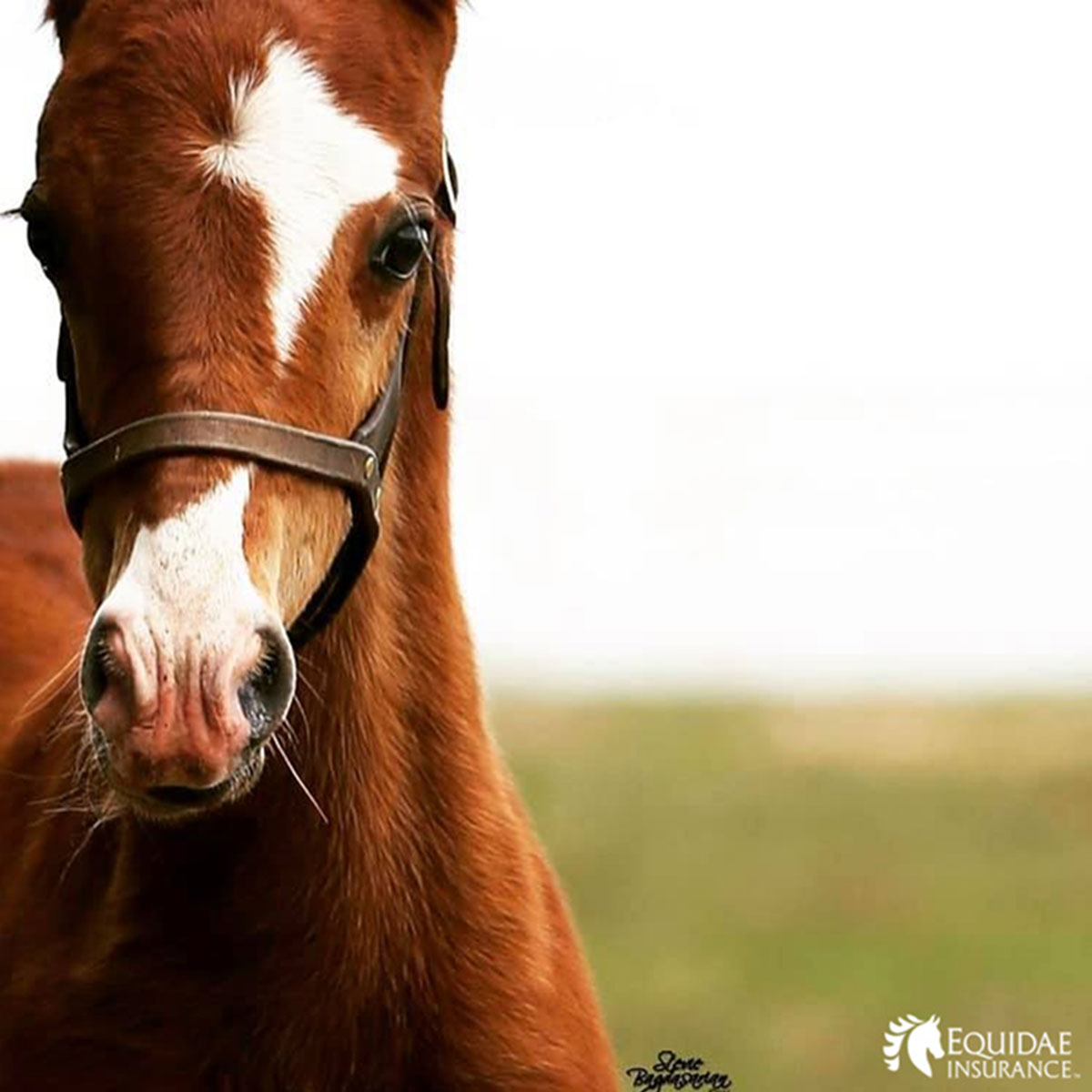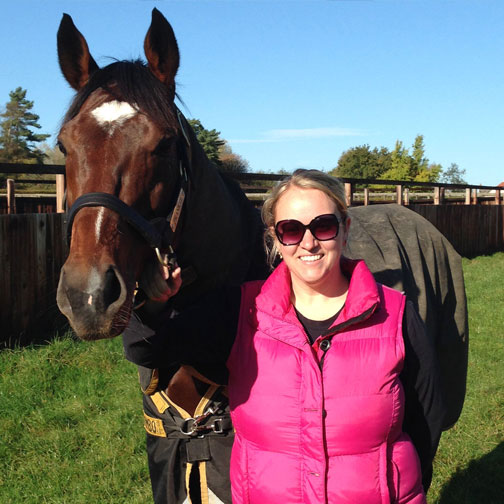Foaling: What to Expect When You’re Expecting

Dr. Ashley Craig, DVM – Hagyard Equine Medical Institute
We recently talked with Dr. Ashley Craig, DVM of Hagyard Equine Medical Institute in Lexington, Kentucky. Here’s what she had to say about the foaling process and how to help secure the birth of a thriving foal:
One of the most important tools to help ensure a happy and healthy foal is to vaccinate your broodmare appropriately. Foals get their immunity from colostrum found in the mare’s first milk after they’re born. This passive transfer of immunity helps provide foals the antibodies they need to fight the disease processes to which they will be exposed.
The broodmare vaccination schedule is very different from that of a show horse or a pasture horse. In months 5, 7, and 9 of pregnancy, the mare should be vaccinated against Herpes, a virus which can cause abortion. Talk with your veterinarian about the necessary vaccines for your mare, as they are often specific to your geographic region. In addition to vaccines throughout the pregnancy, it is recommended that, in the tenth month of gestation, all vaccines are given to the mare to help with the passive transfer of immunity to the foal.
In preparation for birth, be sure to provide a safe and clean stall in which your mare can foal. Clean the stall with an effective cleaner such as Tek-Trol and allow it to dry completely before bedding. While the stall is dry and empty, be sure to inspect it for any hazards that could hurt the foal. Straw is the recommended bedding for foaling and for at least the first few days after your foal’s arrival. Be sure the bedding is deep enough to provide good cushion and good footing. Also talk with your veterinarian about specific items you should have on hand to prepare for birth. When your mare is within two-to-four weeks of foaling, you should notice the mare’s udder or bag start to fill. As the bag becomes engorged with milk, some mares will form a “wax” of crystallized colostrum on their teats. This is a sign of imminent foaling; birth should be expected between 12 hours and up to four days after the wax appears. Mares will also relax behind in preparation for birth.
There are three stages to labor: Stage 1 starts with contractions and can last one to two hours. The mare will stand up and lie down, showing signs of restlessness. She may also roll to try to help position the foal. Stage 2 starts when the mare breaks water and ends when the foal is out. If this lasts longer than 30 minutes, you should seek veterinary assistance immediately. Stage 3 involves the mare expelling the placenta.
One of the basic “rules” of foaling is the 1-2-3 rule. After the foal has been delivered, it should be standing within one hour, nursing within two hours, and the mare should pass the placenta within three hours. These are general guidelines -- and every foal differs -- but you should monitor your foal closely and stay in contact with your veterinarian. He or she should check the foal within 6-12 hours post-nursing, but -- prior to the veterinary exam -- the following activities should take place: The farm manager or owner should check the umbilicus and dip it in a Betadine or chlorhexidine umbilical dip to help reduce the chance of infection through the open umbilicus. The foal should also be dry, as well as up and nursing. It is important to also give the foal an enema to help it pass the meconium to avoid an impaction. When the veterinarian arrives, he or she will examine the foal to make sure there are no broken ribs, the eyes are healthy, the heart and lungs sound good, and the umbilicus is dry and not an abnormal size. Blood will also be drawn to check white blood cell count and immunity levels.
Once your foal is on the ground and has been checked by the veterinarian, it is very important to keep a close eye on both your broodmare and foal. A quick and simple way to monitor them is to take their temperature twice daily. This will allow you to pick up on any disease processes early so you can begin treatment and get them back to being happy and healthy as soon as possible. Once you know your foal is thriving -- and if the weather is appropriate – bring your mare and foal outside to breathe fresh air and move around. Thirty minutes to an hour, twice a day, is a good starting point.
Be sure to enjoy the breeding process! While at times it can be very frustrating, it is one of the most rewarding experiences to share with a horse.

Equidae offers a prospective foal policy as well as mortality and medical for foals. A prospective foal policy covers death of the unborn foal until the specified expiration date, ranging from 7 days to one year after birth. This coverage can be offered to an unborn, prospective foal when the mare is confirmed 42 days in foal by a licensed veterinarian. Mortality coverage for foals is also offered, starting at 24 hours of age, and medical coverages may be added when the foal is 30 days old. For more information or a quote, please contact us today!
William P. Jarrell II, Agent
wjarrell
(859) 509-1503
This material is for informational purposes only. All statements herein are subject to the provisions, exclusions and conditions of the applicable policy. Coverages are subject to individual insureds meeting our underwriting qualifications and to state availability.
Recent Posts
How to Market your Show Horse
Begin with the basics to make your strategy work
Protecting Your Equine Business
Professional Peace of Mind
In any event, you need insurance
Why your Association needs equine organization and event insurance
How to File an Insurance Claim
Read this before you have to
Oh, Baby!
Steps to protecting your prospect’s health AND your investment
Wash, Rinse, Don’t Repeat
Your equine insurance renewal shouldn’t be just the same-old, same-old
Oh, Christmas Treat… Oh, Christmas Treat
The Dos and Don’ts of Feeding Barn Snacks
Why Life Insurance Is Worth Your While at Any Age
Common Misconceptions and Benefits
Protecting Your Fashion Investment
How to care for your show ring apparel
What Is Your Horse Worth?
How to Determine an Equine Insured Value
It’s Only Fun Until Someone Gets Hurt
Why you need personal equine liability insurance
Is Equine Insurance Necessary?
The short, and only, answer is YES!
Foaling: What to Expect When You’re Expecting
How to help secure the birth of a thriving foal
All Farm Insurance Is NOT Created Equal
Is your farm insurance sufficient?
The Best Coverage for Your Equine Business
Your Homeowner’s Policy May Not Be the Solution
Common Mortality Insurance Disputes
Lessons in Avoiding Legal Clashes with Insurers
Structuring an Equine Business
Let’s Talk About That
Are You Operating an Equine Business or a Hobby?
Let’s Talk About That
Business Tax Incentives for the Equine Professionals
Let’s Talk About That
Ringside Seats
Lessons Learned from Running a Horse Show
Staying on the Right Tack
How to Protect your Tack and Harness
Imagine the Possibilities
How Data Has the Power to Transform the Equine Industry
Act Now: Coronavirus Emergency Loans
How the Stimulus Program Can Help Your Equine Business
Loss of Income in the Equine Industry
The COVID-19 Impact: Can my insurance help?
You can bring a horse to water, but…
Winter weather tips for encouraging horses to drink
Be in the know with insurance lingo
A glossary to help you come to terms with your insurance policy
Prepping for a Blue-Ribbon Year
An off-season checklist for show horse trainers
Insurance for Equine Professionals
What kind of insurance does a trainer or boarding facility need?

